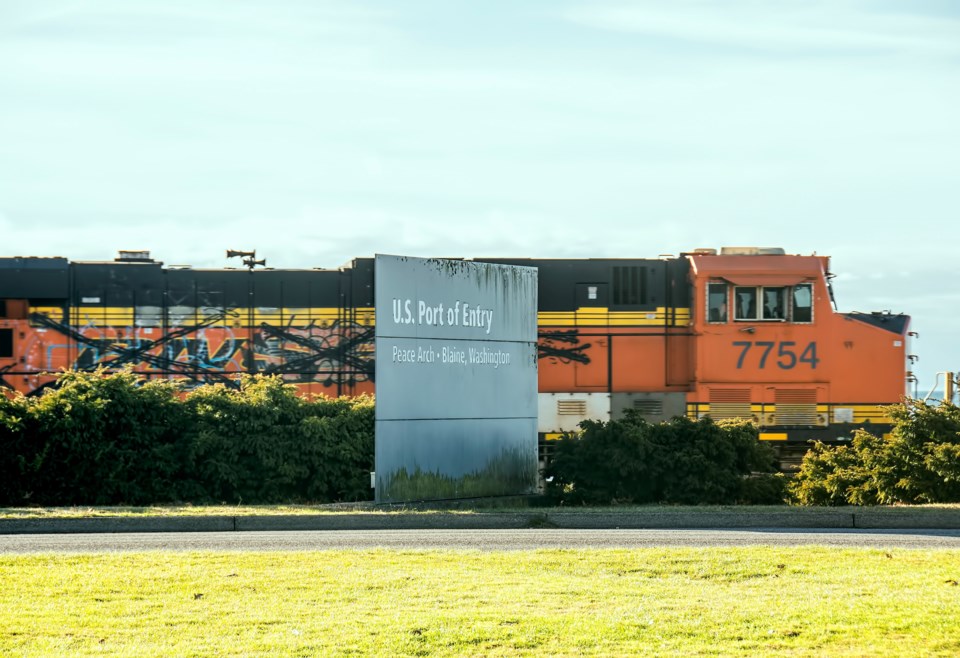B.C. retailers are unlikely to be making long-term plans following U.S. President Donald Trump's Thursday threat to levy a 35 per cent tariff on Canadian imports.
That is because of uncertainty. Trump has made so many tariff threats since he was elected president in November, only to then pause tariff implementation dates, change tariff levels and add new tariff categories, according to retail analyst and DIG360 owner David Ian Gray.
"In all likelihood, there's going to be other flip-flops," Gray said. "What it does is it necessitates retailers to look at the right now, and how to triage, as opposed to how they're going to be building out over the next three to five years," he said.
Trump's habit of backing down on implementing tariffs in May caused a meme to spread across the internet: "TACO," meaning Trump Always Chickens Out.
Nonetheless, Trump last night said in a letter to Canadian Prime Minister Mark Carney, which he posted on his Truth Social website, that the tariffs would go into effect Aug. 1.
The threatened tariffs would most likely only apply to goods exported to the U.S. that fall outside the Canada-United States-Mexico Agreement (CUSMA), Central 1 Credit Union chief economist Bryan Yu told BIV.
Those goods are currently tariffed at a 25 per cent rate, so the real impact of the new threatened tariffs would only be a 10-percentage-point increase in that levy.
"There's no good news with this," said Yu. He added that the new tariffs would only be "modestly higher" for the goods that it impacts.
Canada is separately subject to 50 per cent tariffs on aluminum and steel exported to the U.S., and a 25 per cent tariff on autos sent stateside. Trump this week also threatened a 50 per cent tariff on copper imports to his country, with most of those coming from Canada.
Both Yu and Gray stressed the lack of clarity that surrounds the latest proposed tariffs, and whether Canada will have a response.
Trump said in his letter that any Canadian retaliation would be responded to in kind, on top of the 35 per cent tariff.
Yu said the tariff threats could be part of a negotiating tactic, given that U.S. and Canadian negotiators are trying to agree to an economic and security deal by a deadline now set to be July 21.
The tariffs would be on goods made in Canada and not on Canadian companies that make products abroad.
Gray said Canadian manufacturing products exported to the U.S. includes groceries, furniture and other goods. Only about 38 per cent of U.S. imports of Canadian goods were traded under CUSMA in 2024, according to RBC.
B.C. companies, such as Aritzia, are impacted by separate Trump tariffs because their production is largely in Asia.
The company yesterday released earnings and held a conference call for analysts.
CEO Jennifer Wong said on the call that one of the biggest challenges for her company is that some manufacturing is in China, which has been targeted heavily by Trump tariffs.
Aritzia's response has been to edge production away from relying on China.
Another large Vancouver-based retailer, Lululemon Athletica Inc., has similarly told analysts in conference calls that tariffs would impact its profit margin.
Lululemon CFO Meghan Frank told investors on a June 5 conference call that she expected the company’s overall profit margin to decline by 110 basis points, notably above the 60-basis-point decline the yogawear maker had previously forecast.
“We expect the additional 50 basis points of deleverage to be driven predominantly by increased tariffs,” Frank said.
“When looking specifically at tariffs, the assumptions we’ve made regarding rates include 30 per cent incremental tariffs on China, and an incremental 10 per cent on the remaining countries where we source.”




